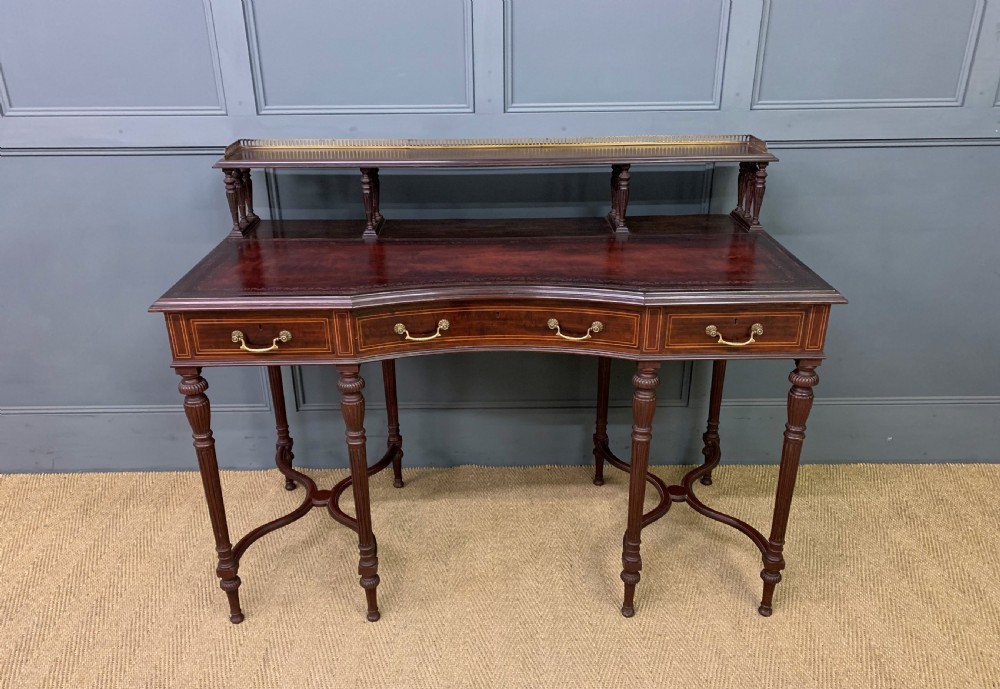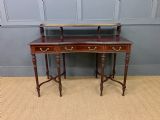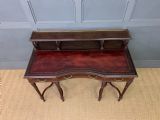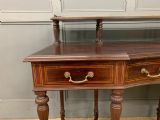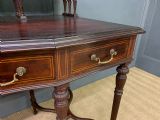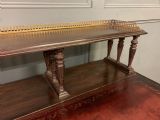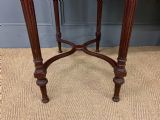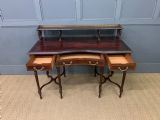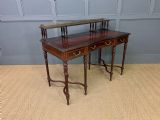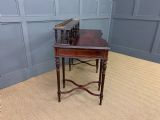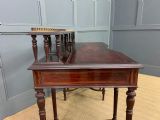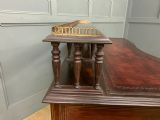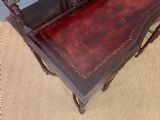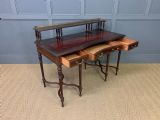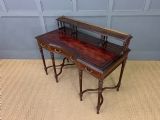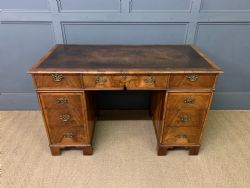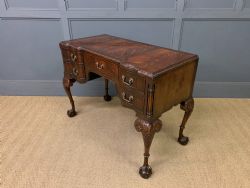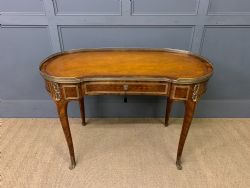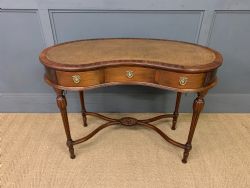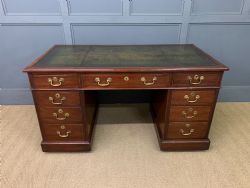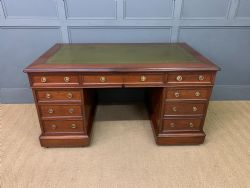Inlaid Mahogany Writing Desk by Collinson and Lock
Price
£1,650
| $2,222 USD | €1,942 EUR
Item Ref
18281
Description
A very fine quality writing table by the prestigious London firm of cabinet makers, Collinson and Lock. Made in the third quarter of the 19th century with Regency style influences. Of excellent construction in solid mahogany and attractive mahogany veneers. The table , or desk, is decorated throughout with inlaid boxwood stringing. The raised superstructure is supported by a series of finely turned bobbin supports and also fitted with a brass gallery. The table itself has a sumptuous burgundy red leather writing surface (decorated with gilt tooling) and a series of three drawers. The central, longer, drawer is of concave form. All are fitted with their original solid brass handles. The table stands on extremely elegant turned and reeded legs, which are tapered. They are united by wonderful x-frame under-stretchers giving stability as well as aesthetic appeal.The whole desk is presented for sale in excellent condition. It has a wonderful colour and patina and is of the highest of quality. It is ready to go straight into the home , or office. Whilst it does not bears the makers label or stamp see Clive Edwards book , page 161 for a similar example.
Dimensions:
Width 126 cms
Depth 61 cms
Overall Height 96cms
Table height 77cms
Knee hole clearance 63cms
The firm of Collinson & Lock, successors to John Herring, an upholsterer and cabinet maker of Fleet Street, est 1782, was established in London in the third quarter of the 19th century, firstly at their old masterís premises, and thereafter at the premises of the recently closed firm of Jackson and Graham. They quickly achieved both commercial success and a leading position in the field of design. In 1871 the firm issued an impressive illustrated catalogue of 'Artistic Furniture', with plates by J. Moyr Smith, assistant to Christopher Dresser, and in 1873 was trading from extensive newly built premises in St Bride Street, designed by T.E. Collcutt, who was retained as an advisor. E.W. Godwin was also employed, between 1872-1874..
The firm continued to produce very high quality items of furniture and soon began to experiment with new materials and designs, becoming especially renowned for their distinctive combinations of rosewood and ivory and their intricate Italianate arabesques, chimeric figures and scrolling foliage. This form of decoration clearly points to the involvement of Stephen Webb, Collinson & Lockís chief designer who was later appointed Professor of Sculpture at the Royal College of Art. The company was merged with Gillows in 1897, just prior to their own merger with S.J.Waring of Liverpool.
Internal Ref: 18281
Dimensions
Height = 96 cm (38")Width = 126 cm (50")
Depth = 61 cm (24")
We accept online payments for this item:
BUY NOW with CREDIT CARD or PAYPAL
Email about this item:
SEND EMAIL
